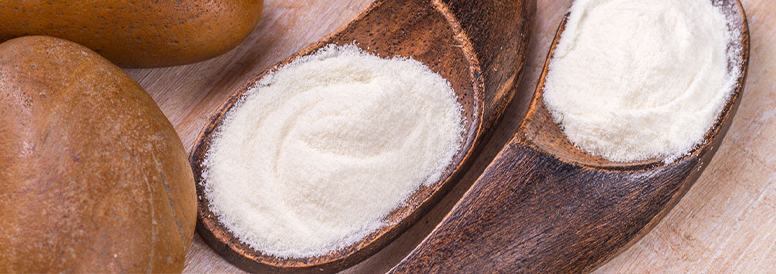Collagen Origin, Uses and Types
Collagen is an essential structural protein found in the skin providing support and strength. Babies produce an ample supply, but we produce less and less with each passing year. This reduction of collagen in the skin contributes to signs of aging – signs that our collagen production is insufficient. If we aren’t endogenously producing an adequate supply, it makes sense that supplementing might help. Recent research in the past 5 years has looked at this very theory, and a few studies have shown that collagen peptides may indeed contribute to supporting healthy skin structure.* But with all the available options on the market these days, it might be helpful to understand the differences.
Collagen as an ingredient in supplement products is becoming very popular and has a variety of uses. Collagen is the most abundant protein of animal origin, making up almost 30% of the total protein in the human body. The main function of collagen is to support the structure of various organs and tissues throughout the body.
The sources of the collagen used in supplements are always of animal origin – usually bovine or chicken – but we are also seeing more marine sources as well.
Gelatin is a form of collagen which has been used extensively in varying industries (pharmaceuticals, food and beverage, tissue engineering) because of its gelling property. The structure of collagen proteins are three polypeptide chains in the extracellular matrix which form a triple helix structure. When the chains/cross-linkages of collagen are broken down via partial heat-induced hydrolysis, gelatin forms. Gelatin is a combination of peptides and proteins.
Hydrolyzed collagen is another form of collagen that has been broken down into smaller peptides. As heat is what alters proteins such as collagen, recent ways to extract collagen from animal tissues have moved away from heat and more towards using proteases, an enzyme that breaks down proteins and peptides. The peptides from hydrolyzed-collagen (or collagen hydrolysate) are biologically active, but require further digestion, processing or fermentation to liberate them from the parent protein.
The peptides are what have the physiologic functions in the body. The amino acid sequence of the peptides depends on the specific source of the protein and the method of production. Research has documented 27 types of collagen, but there are 3 main forms that are most abundant in the body. These are type I, II, and III collagen. Each form of collagen has a different make up of amino acids and a specific function within the body.
- Type I Collagen: Approximately 90% of the organic mass of bone in animal bodies is type I collagen, which is found in skin, tendons, ligaments, interstitial tissues and the cornea. It offers both tensile strength for soft tissues and load bearing properties for bone.*
- Type II Collagen: This is the main collagen found in cartilage. This is necessary for production and rebuilding of connective tissue throughout the body. This type of collagen has been studied for joint support.*
- Type III Collagen: Type III collagen is found primarily along with type I collagen in tissues. It helps to create reticular fibers of the skin, blood vessels and a structures of the lungs, liver and spleen. Type III collagen is also abundant in elastic tissues.*
As collagen production decreases with age, collagen supplements are believed to help support the level of collagen available to be used for hair, skin, nails and other tissues.* When taken orally, collagen is absorbed via the intestine, but will then circulate and be used in different areas of the body. A study showed that oral consumption of a collagen hydrolysate (Verisol®) was shown to support skin health and elasticity.* Another study found that oral use of collagen peptides was supportive for joint health2.*
Collagen I & III are the types of collagen found in healthy skin tissues. There are now a wide variety of collagen supplements targeted for supporting skin health, which contain type I and usually type III collagen as well.

